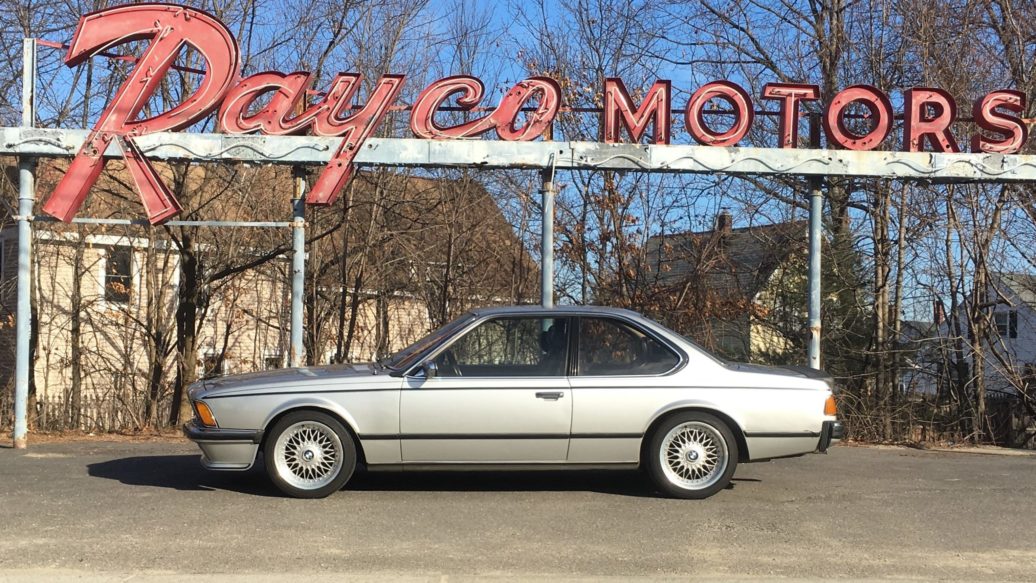My 1979 Euro 635CSi hasn’t gotten a lot of ink, electrons, or action in months. The big coupe’s forte is long-haul driving, and with events like Southeast Sharkfest and the Vintage cancelled, it’s all dressed up with nowhere to go. Sure, I can pleasure-drive it, but with the three 2002s, the Z3 M coupe, the 3.0CSi, the Bavaria, and the Lotus Europa all ahead of it in the line of cars whose key I’d twist for stress-busting motoring, it’s spent a lot of time sitting in one of the garage spaces I rent in Fitchburg.
Last spring, since I wasn’t driving it, I talked myself into selling it, so I brought it back from Fitchburg, shot the necessary photography and video, and wrote up a detailed description. But then, as the car was sitting in my driveway, I kept looking out the window at it and thinking, “Damn that’s a good-looking car,” and decided it was too cool to part with.
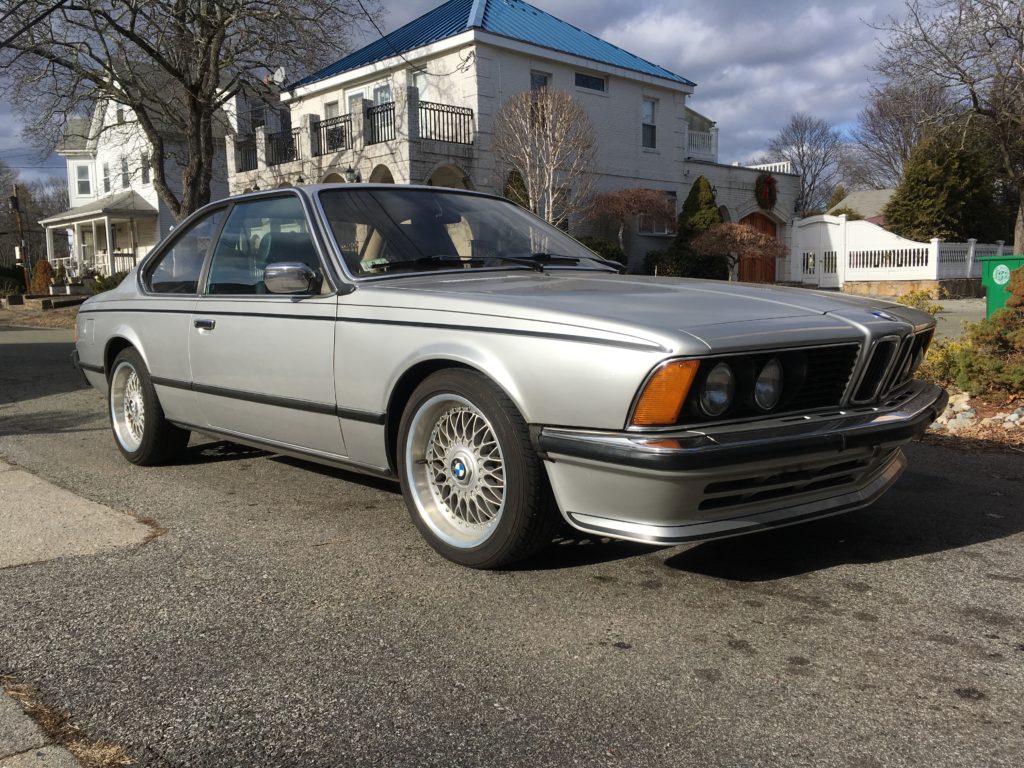
Not ready to quit you, baby.
Walking up to the edge of a sale and then stepping back might seem like a waste of time, but there’s value in the process. A good head-versus-heart debate can be clarifying, no matter which side of the fence the decision falls on. But in addition, whenever I write up an ad and list a car’s needs, it turns into a potential punch list—that is, if you can easily fix a car’s foibles rather than enumerate and apologize for them, it makes it easier to sell.
One minor issue was that the left taillight lens was cracked. An email to Big Al Taylor fetched a replacement so easily that I wondered why I’d lived with the crack for years.
But the other apology issue was the speedometer error. This car is an early Euro E12-based 635CSi, so it originally came with the 218-horsepower M90 engine, dogleg close-ratio five-speed transmission, and 3.07:1 differential. At some point in its past, however, the car lost the M90 and the dogleg, and was now running a U.S.-spec 182-horsepower M30B34 engine and a Getrag 265 five-speed overdrive gearbox. The combination of the overdrive trans and the 3.07 rear end made the gearing so tall that at 80 mph, the engine was only spinning at 2,700 rpm. That’s great for gas mileage and low engine noise, but the M30B34 doesn’t have the grunt of the M90, and with gearing that tall, the car was a bit anemic.
I own an old 3.45 sideloader differential from a 2800 CS I parted out in 1986. About three years ago, I dug it out from under my back porch, cleaned it up, and threw it in Sharkey, and I was pleased with how it woke up the car. However, it produced the expected speedometer error, with the needle reading 90 when my GPS reported 75. When I began thinking about selling the car, this was exactly the kind of thing that it’s better to fix than have to explain and apologize for.
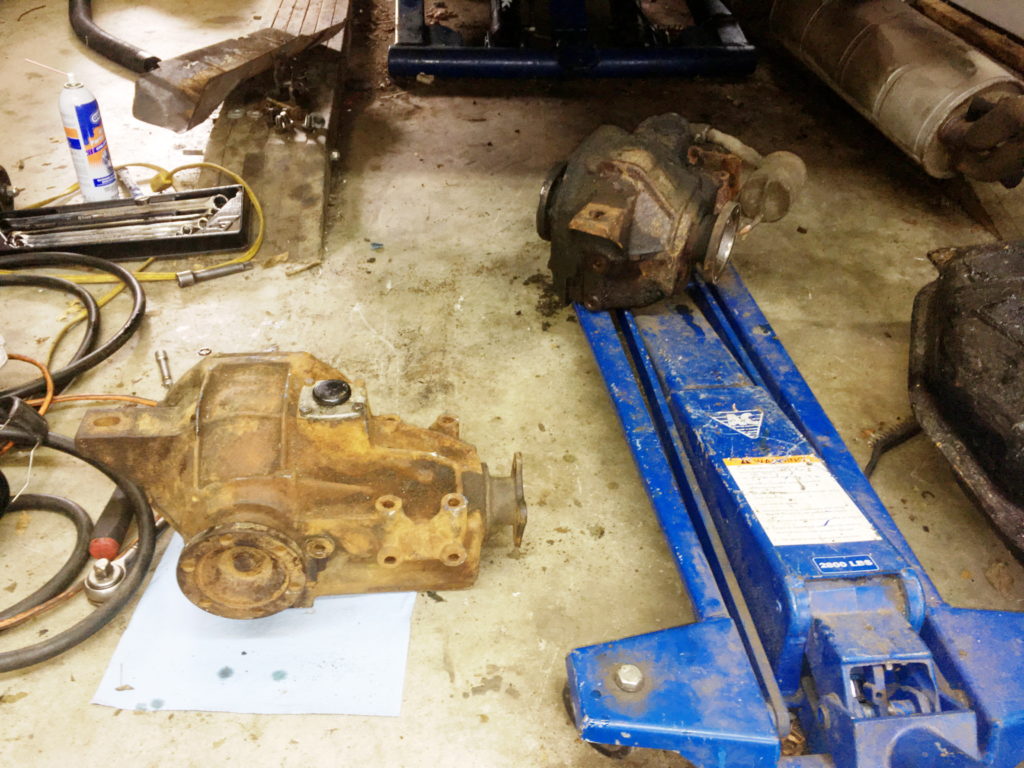
The differential swap took place a few years back.
So I spoke with Jeff Caplan at Odometer Gears, figuring that this was a simple gear change—not unlike the other odometer repairs I’ve successfully done. Unfortunately, Jeff said that this was more involved than that, and recommended a few speedometer shops where I could send the unit for recalibration.
But I was curious to see if there was another path.
I did some research and learned that the North American-spec E12-based 633CSis came with a 3.45:1 rear end, so a speedometer from one of those cars should already be correctly calibrated for my application. I searched on eBay and found a well-priced instrument cluster from a Canadian 1981 633CSi. I knew that its speedo would be labeled in kph rather than mph, but that didn’t bother me; in fact, it seemed truer to Sharkey’s Euro provenance than the mph-calibrated speedo that was currently in the car. I clicked and bought.
It took me a while to get around to the project, so the replacement cluster sat in a box in the basement. Eventually, though, I retrieved Sharkey from Fitchburg and had at it. Out came the original cluster. Removal is slightly more involved than it is on a 2002, but it’s still a straightforward job.
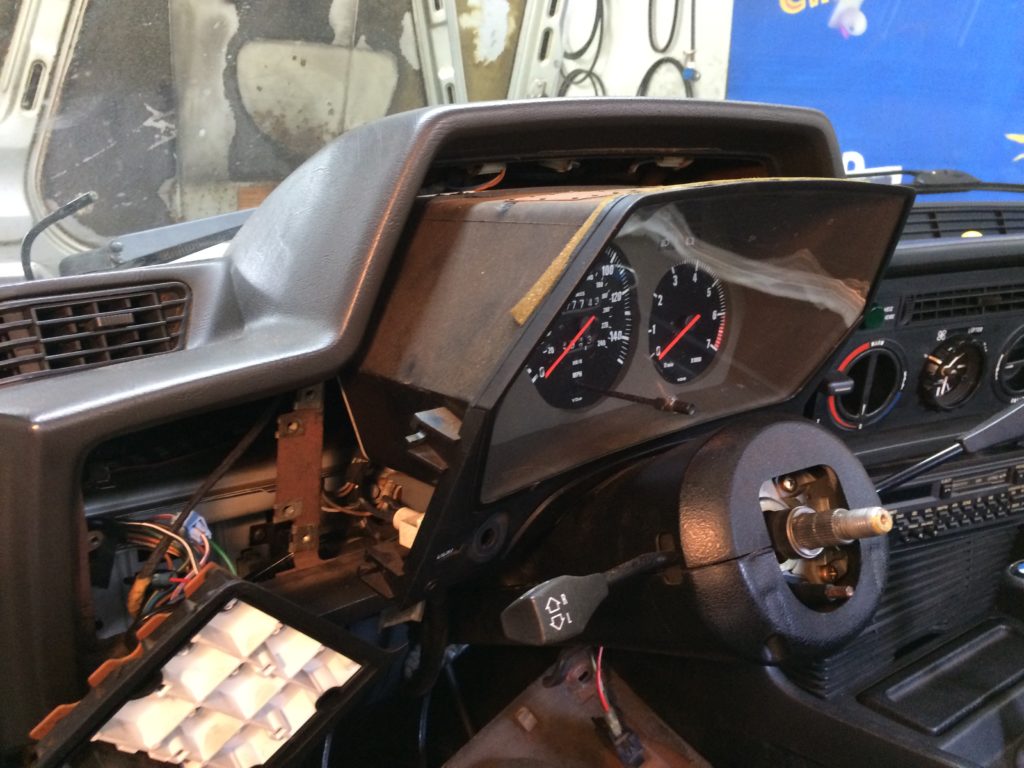
This looks much worse than it is.
But when I compared the two clusters, I realized that I hadn’t looked at the photos in the eBay ad closely enough, because in addition to the kph-versus-mph issue, the dials on the gauges of the replacement cluster had a very different look and feel to them. The numbers on the new gauges were bigger, the gradation lines were coarser, and the needles were white instead of red. The original cluster was just, well, cooler. And the original light switches were still labeled in German, saying Licht and Nebel instead of the more pedestrian Light and Fog. I was particularly fond of the Nebel switch, as I imagined it opening a small compartment and releasing the similarly-named little worm-like character from Men In Black II.
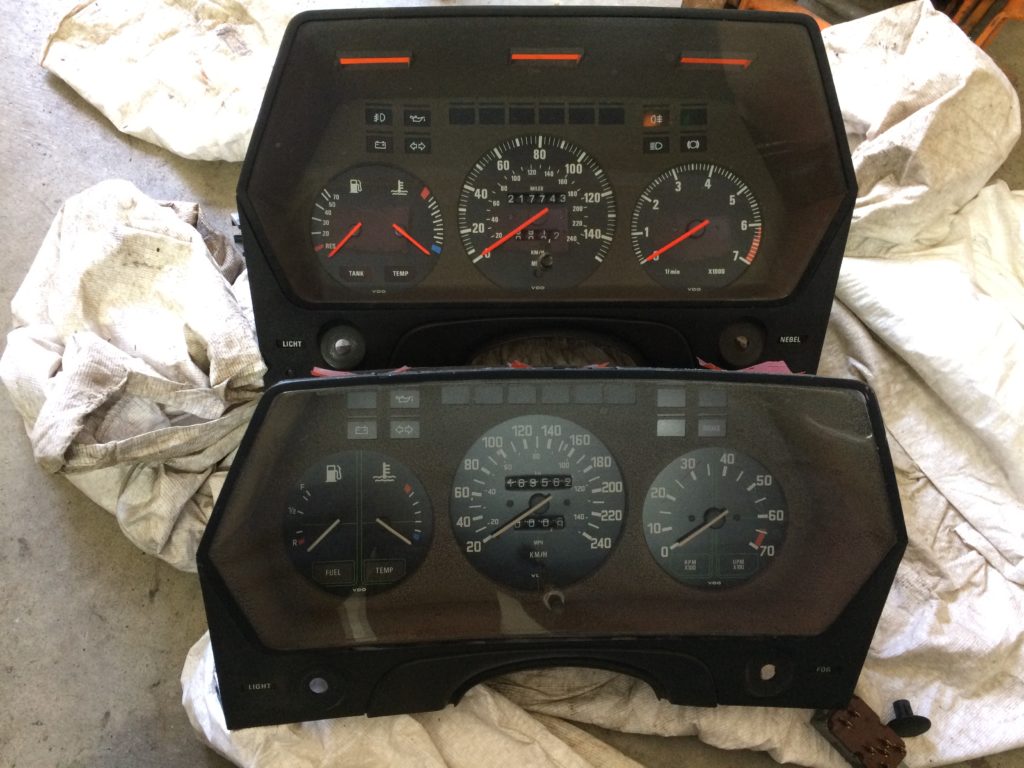
I had misgivings about the bland North American cluster.
Still, I’d bought the replacement cluster in order to solve a problem. I had the original one out. Might as well swap them, right? Figuring that it was the kind of thing I’d acclimate to and not give another thought to after the first two minutes, I installed the replacement cluster, then took the car for a test drive. Although I did miss the look and feel of the old gauges and their red needles, the speedometer agreed with my GPS to within about two mph, and that was the important part.
But then I noticed something: The new odometer wasn’t updating. Damn! And the thing had been sitting in a box in my basement for long enough that it wasn’t reasonable to seek a refund from the seller.
I was faced with a choice: Should I fix the odometer in the cluster I’d just bought, or send the speedo in the original cluster out for recalibration? I thought that fixing the odometer was probably cheaper, so I swapped the original cluster back in. Plus, if for some reason I needed to sell the car quickly, a functional odometer would be preferable to a miscalibrated speedometer.
And then everything sat for another six months.
Last month, while cleaning the basement, I stumbled across the box with the replacement cluster in it, and remembered that I’d left this whole issue unresolved. I thought about it and felt that while I could pull the original cluster back out of the dormant car and send the speedometer out for recalibration, perhaps it was best to leave it unmolested in case I or someone else wanted to reinstall the original 3.07 differential. Plus, I thought that fixing the replacement cluster’s broken odometer would be a perfect self-contained little pandemic project.
So I dragged the cluster upstairs, laid it out on the kitchen table, pulled out the speedometer, and verified that the two usually-suspect little plastic gears on the odometer shaft were indeed cracked. I went onto the Odometer Gears website to click and buy the parts, but I couldn’t find documentation on exactly how to replace them. I recalled that doing this on my 2002 was fairly straightforward, but on my 3.0CSi, it was way more involved, required pulling the needle off the front of the speedometer. I wanted to know which flavor of trouble I was getting into.
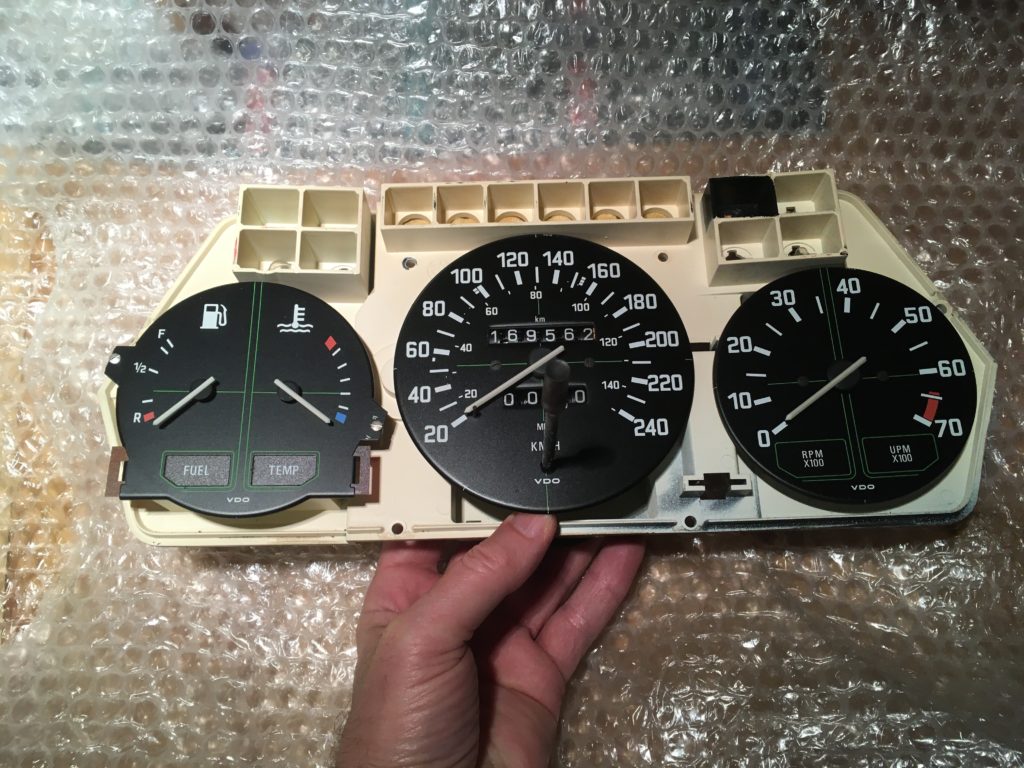
The partially-disassembled replacement instrument cluster.
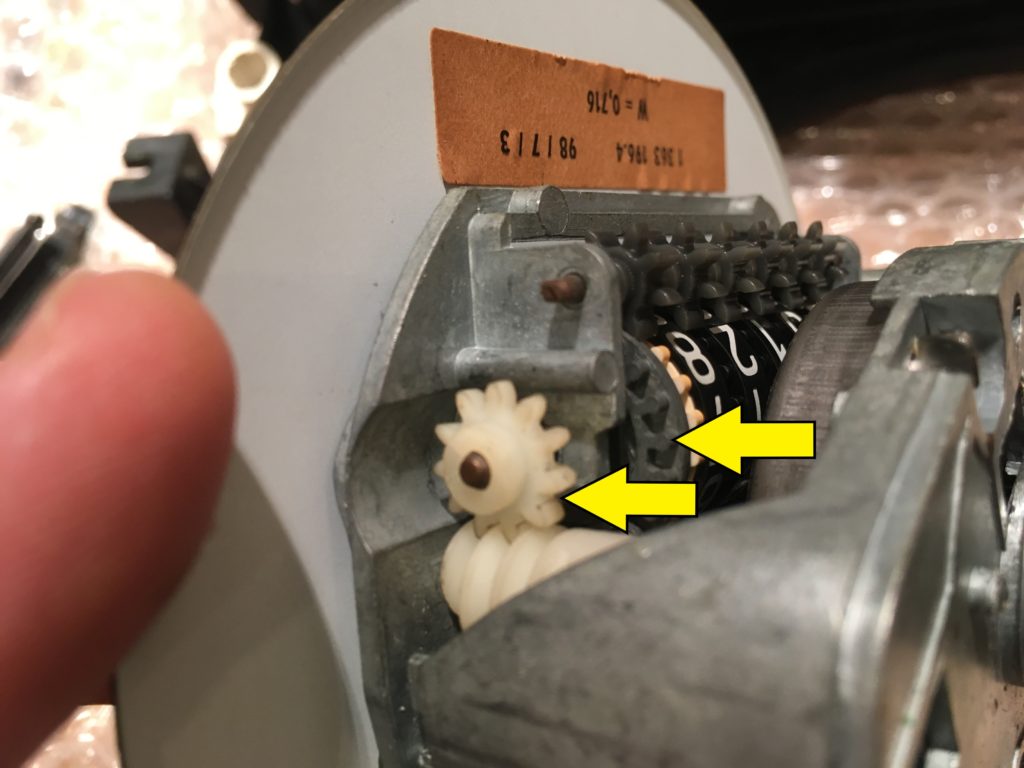
The speedometer removed from the cluster. Both of these two gears that run the odometer were cracked.
I messaged Jeff Caplan at Odometer Gears. “Yeah,” he replied, “on these, it’s kind of a pain. The needle does need to come off, and it’s pretty easy to bend or break it. If you want to just box it up and send it to me, I’ll give you a good price on fixing it.” I don’t know whether Jeff’s generosity was because he was remembering when, in 2016 at the Vintage, I diagnosed that the non-functional charging system in his 1600 was due to his newly-rebuilt alternator and his new voltage regulator both not working, and fixed it with a spare regulator from my trunk and a spare alternator from Brad Day’s, but, whatever the reason, I took him up on his gracious offer.
A few days later, Jeff messaged me saying that it had been a bit of a bear, but he got the needle off and the gears replaced without damage. Soon after, the speedometer arrived in the mail, so I reassembled the instrument cluster. I was thinking of the logistics of bringing Sharkey back from Fitchburg so that I could install it, but then all that excitement happened with Zelda, my former Z3 that I resurrected for my friend and neighbor Kim after a curb strike bent both of the car’s lower control arms.
I could easily have left the cluster sitting in the basement again until spring, but in a world of unsolvable problems, it was the kind of thing that I’d get a lot of pleasure out of knocking off and knowing that it was done.
But as we edge into December, I have the cars positioned where I want them, so my desire to drive out to Fitchburg and swap another car for the 635CSi is waning. Although the cluster swap is easy, I’m hesitant to do repairs out there, since the garage at my house has all the advantages of tools, parts, heat, electricity, lighting, a bathroom, and coffee. Plus, the rented garage in Fitchburg isn’t really in the best part of town, so the less conspicuous I am while there, the better.
However, the day after Thanksgiving brought 50-degree temperatures, so I put the cluster and my travel tool box into the E39 and headed west.
I thought that maybe I could surreptitiously swap clusters with the car fully in the garage bay, but to work behind the cluster, you really need to have the car door open, and the garage bays are so small that this was not possible. So out under expectant clouds Sharkey came. Fortunately, the weather held, and any shady individuals were probably still in a tryptophan-induced fog.
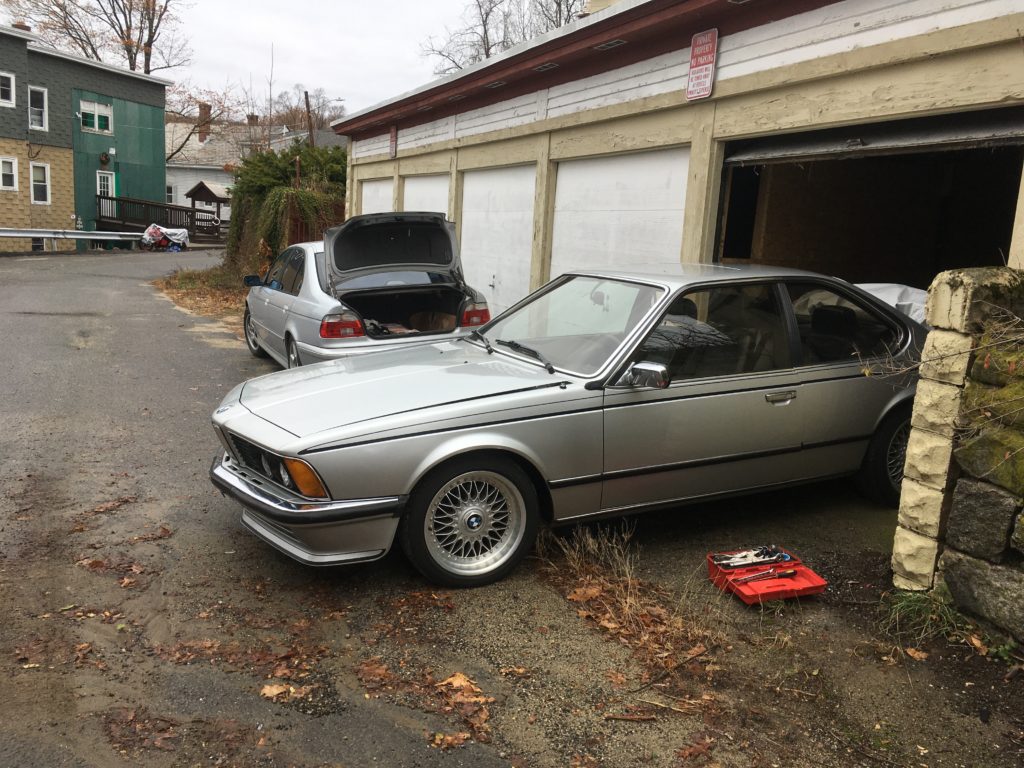
Nothing inconspicuous about this.
I pulled the original cluster out and was about to install the one with the repaired odometer when I noticed that the inside of its plastic front cover was pretty dirty. Foolish me; I should’ve cleaned it at home with Windex and a lint-free cloth before I reassembled it. Out here, all I had was spit and my shirtsleeve. I was about to do the best I could when I realized that instead, I could easily swap housings with the original cluster, whose front panel looked very clean. Then, as as I pulled it apart, I realized that doing so brought the delightfully unexpected benefit that along with the other housing came the Licht and Nebel labels. I still don’t like the white-needle coarsely-marked gauges, but both the speedometer and the odometer are working, and that’s more important.
And I can turn on Nebel. So, as Carl Spackler said, I’ve got that goin’ for me.
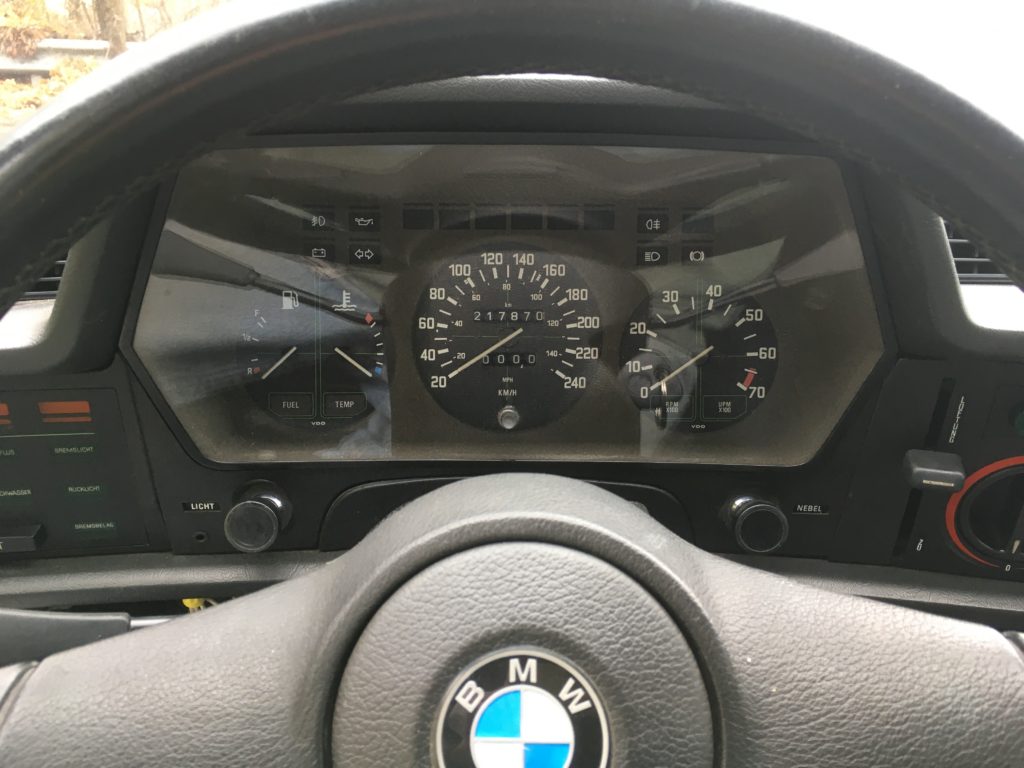
We are again Nebel-enabled (enebeled?)!
Now, if only Sharkey, Nebel, and I had somewhere to go.—Rob Siegel
Rob’s latest book, The Lotus Chronicles: One man’s sordid tale of passion and madness resurrecting a 40-year-dead Lotus Europa Twin Cam Special, is now available here on Amazon. Signed copies of this and his other books can be ordered directly from Rob here.

